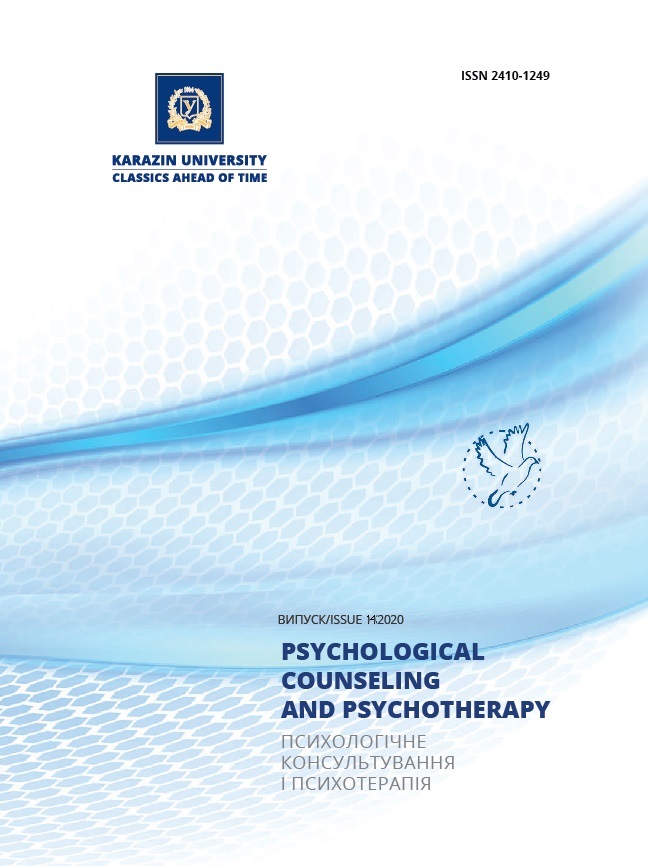Psychological Determinants of Personaliti Bullying in the Sociometric Dimension
Abstract
The article considers the main problems that arise when conflicts of interest between people in the sociometric dimension. The need for their comprehensive study will help to eliminate the negative consequences and use positive solutions to these conflicts for the development of the individual, his integration into society. The urgency of the work lies in the search for rational approaches to the origin and prevention of psychological bullying in the sociometric dimension as a consequence of the conflict of personality in agreement with its characterological education, psychological attitudes and beliefs. that is why the problem of bullying deserves in-depth study. The aim of the article is to study the influence of bullying on the uncertainty of adolescents in the sociometric dimension. The work is based on the provisions of prevention and reduction of external discrimination, isolation, humiliation and harassment, which will serve as factors to prevent personal uncertainty in the future. Bullying undermines the victim's self-confidence, destroys health, self-esteem and human dignity. There is a bullying structure, which is a social system that includes the offender, the victim and observers. Methods of measuring the manifestations of psychological bullying are determined, the corresponding set of methods of psychodiagnostics is presented and tested. Empirical data show that with insufficient and excessive mobilization of the individual there are with a high degree of probability such mental states that disturb the adaptive balance. Thus, with insufficient mobilization in a difficult life situation, it is likely to appear apathy and reduce energy expenditure. On the other hand, in a situation of excessive mobilization there is a state of high voltage against the background of excessive energy consumption. The results of this study are important in establishing international cooperation in the study of programs and projects in the context of transforming the human health system in accordance with international partnership standards and implementing a cultural exchange program for education and culture between countries.
Downloads
References
Calvete, E., Orue, I., Fernández-González, L., & Prieto-Fidalgo, A. (2019). Effects of an incremental theory of personality intervention on the reciprocity between bullying and cyberbullying victimization and perpetration in adolescents. Plos One, 14(11), e0224755. https://doi.org/10.1371/journal.pone.0224755.
Farrell, A.H., & Vaillancourt, T. (2020). Bullying Perpetration and Narcissistic Personality Traits across Adolescence: Joint Trajectories and Childhood Risk Factors. Frontiers in Psychiatry, 11, 483229. https://doi.org/10.3389/fpsyt.2020.483229.
Forsberg, C., & Horton, P. (2020). 'Because I am me': school bullying and the presentation of self in everyday school life. Journal of Youth Studies , 1-15. https://doi.org/10.1080/13676261.2020.1849584.
Garandeau, C. F., Vermande, M. M., Reijntjes, A. H. A., & Aarts, E. (2019). Classroom bullying norms and peer status: Effects on victim-oriented and bully-oriented defending. International Journal of Behavioral Development, 016502541989472. https://doi.org/10.1177/0165025419894722.
Gonzalez-Cabrera, J., Machimbarrena, JM, Ortega-Baron, J., & Alvarez-Bardon, A. (2019). Joint Association of Bullying and Cyberbullying in Health-Related Quality of Life in a Sample of Adolescents. Quality of Life Research, 29(4). 941-952. https://doi.org/10.1007/s11136-019-02353-z.
Hong, J.S., Choi, J., Espelage, D.L., Wu, C.F., Boraggina-Ballard, L., & Fisher, B.W. (2020). Are Children of Welfare Recipients at a Heightened Risk of Bullying and Peer Victimization? Child & Youth Care Forum. https://doi.org/10.1007/s10566-020-09587-w.
Horton, P. (2019). School Bullying and Bare Life: Challenging the State of Exception. Educational Philosophy and Theory, 51(14). 1444-1453. https://doi.org/10.1080/00131857.2018.1557043.
Ireland, L., Hawdon, J., Huang, B., & Peguero, A. (2020). Preconditions for Guardianship Interventions in Cyberbullying: Incident Interpretation, Collective and Automated Efficacy, and Relative Popularity of Bullies. Computers in Human Behavior, 113, 106506. https://doi.org/10.1016/j.chb.2020.106506.
Kennedy, R.S. (2020). A Meta-Analysis of the Outcomes of Bullying Prevention Programs on Subtypes of Traditional Bullying Victimization: Verbal, Relational, and Physical. Aggression and Violent Behavior, 55, 101485. https://doi.org/10.1016/j.avb.2020.101485.
Liu, J., Guo, SY, Weissman, R., & Liu, HD (2020). Investigating Factors Associated with Bullying Utilizing Latent Class Analysis Among Adolescents. School Psychology International. 0143034320967061. https://doi.org/10.1177/0143034320967061.
Méndez, I., Jorquera, AB, Ruiz-Esteban, C., Martínez-Ramón, JP, & Fernández-Sogorb, A. (2019). Emotional Intelligence, Bullying, and Cyberbullying in Adolescents. International Journal of Environmental Research and Public Health, 16(23), 4837. https://doi.org/10.3390/ijerph16234837.
Tekel, E., & Karadag, E. (2020). School Bullying, School Mindfulness and School Academic Performance: A Structural Equation Modeling Study. Journal of Psychologists and Counselors in Schools, 30(2). 129-145. https://doi.org/10.1017/jgc.2019.10.
Viejo, C., Leva, B., Paredes, J., & Ortega-Ruiz, R. (2020). Bullying and Psychological Dating Violence: The Relation Between Two Aggressive Peer-Behaviors. Psychothema, 32(4). 533-540. https://doi.org/10.7334/psicothema2019.223.
Yuan, YY, Yang, LF, Cheng, XY, & Wei, J. (2020). What is Bullying Hiding? Exploring Antecedents and Potential Dimension of Knowledge Hiding. Journal of Knowledge Management. https://doi.org/10.1108/JKM-04-2020-0256.








